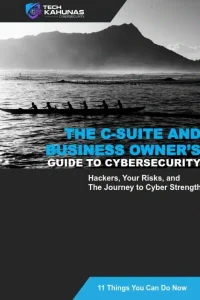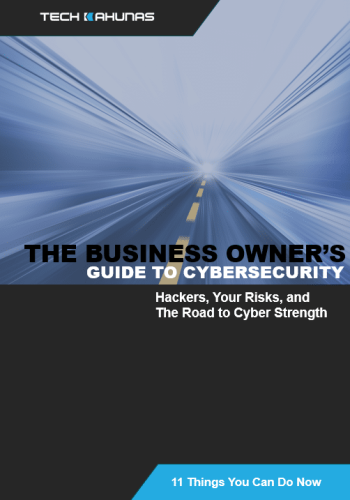You're facing a dynamic cyber threat landscape that targets your family's sensitive information and financial assets. Cyber threats are more sophisticated, evolving to bypass traditional defenses with techniques like phishing scams that leverage social engineering to gain unauthorized access. Ransomware attacks can cripple operations by exploiting outdated software, demanding urgent attention to threat detection and response capabilities. Combat these threats through heightened cybersecurity awareness, robust incident response plans, and secure data management. Implement multi-layered security, regular software updates, and expert consultations to fortify your defenses. Discover how each strategy plays a pivotal role in securing your family office's cyber resilience.
Key Takeaways
- Phishing scams exploit email spoofing and social engineering, targeting individuals for sensitive information disclosure.
- Ransomware attacks capitalize on unpatched vulnerabilities, demanding payment for encrypted data recovery.
- Regular employee training enhances awareness of phishing attempts and secure data handling practices.
- Implementing multi-layered security, including firewalls and intrusion detection systems, fortifies defenses against cyber threats.
- Consistent software updates and offline data backups are essential for ransomware attack prevention and recovery.
Understanding Cyber Threats
Understanding cyber threats requires a keen awareness of the constantly evolving digital landscape. As a decision-maker, you must recognize the significance of threat evolution and how it impacts your organization's security posture. Cyber threats aren't static; they develop in complexity and sophistication, adapting to new technologies and defensive measures. This evolution is driven by various attack motivations, such as financial gain, political influence, or data theft.
To effectively safeguard your assets, you must analyze the underlying motivations behind these threats. Financially motivated attackers typically target sensitive data, such as credit card information or banking credentials, which can be monetized quickly. Political or ideologically driven cybercriminals may aim to disrupt operations or damage reputations through espionage or sabotage. Understanding these motivations helps you anticipate potential threats and tailor your defenses accordingly.
Stay informed about the latest threat intelligence and trends, as they provide insights into attacker behavior and emerging risks. By doing so, you can develop robust strategies to counteract these evolving threats.
Implementing proactive security measures and fostering a culture of cybersecurity awareness within your organization guarantees you're better prepared to defend against the ever-changing cyber threat landscape.
Common Attack Vectors
Maneuvering the intricate web of common attack vectors is essential for fortifying your organization's defenses against cyber threats. Social engineering remains a potent tactic, manipulating individuals into disclosing confidential information.
Meanwhile, insider threats exploit existing access, making them challenging to detect. Various malware types, from ransomware to spyware, infiltrate systems, causing data breaches and operational disruptions.
Zero day exploits target unpatched software vulnerabilities, leaving no time for preemptive measures. Credential stuffing attacks take advantage of reused passwords, automating login attempts across multiple platforms. This is especially concerning as remote work risks increase the likelihood of unsecured network access.
In addition, supply chain attacks compromise third-party vendors, injecting malicious code into trusted software updates. This indirect method of breach can affect even the most vigilant organizations.
IoT vulnerabilities also present significant risks, as these devices often lack robust security measures, providing an entry point for attackers. Protecting against these vectors requires a multi-layered security strategy.
Regularly update and patch systems to guard against zero day exploits, enforce strong authentication to combat credential stuffing, and conduct security training to reduce susceptibility to social engineering and insider threats.
Secure your supply chain and IoT devices to further bolster your defenses.
Phishing Scams Explained
Phishing scams, though deceptively simple, continue to be a prevalent threat in the cybersecurity landscape due to their evolving sophistication. They employ phishing techniques such as email spoofing and social engineering to deceive individuals into revealing sensitive information.
Email spoofing involves crafting emails that appear to come from legitimate sources, tricking you into clicking malicious links or attachments. These actions often lead to malware delivery, potentially compromising your systems or data.
Social engineering plays a significant role in these scams by exploiting psychological manipulation. Attackers might impersonate trusted figures, urging immediate action, hence increasing the likelihood of falling prey to targeted attacks.
These scams aren't random; they often target specific individuals or organizations, making them particularly dangerous for family offices.
Enhancing cybersecurity awareness is vital in combating phishing. Educate yourself and your team about common red flags, such as mismatched email domains or unsolicited requests for personal information.
Implementing robust prevention strategies, like multi-factor authentication and email filtering, can mitigate risks. In the event of a breach, a swift incident response is essential to minimize damage.
Ransomware Risks and Prevention
As threats like phishing scams continue to evolve, another formidable challenge in the cybersecurity landscape is ransomware. Ransomware trends indicate a surge in sophisticated attacks targeting family offices. Attackers often exploit vulnerabilities in outdated software, gaining unauthorized access to sensitive data. Understanding these trends is vital for developing effective prevention tactics.
To mitigate risks, you need reliable detection tools. These tools scan for anomalies, helping you identify potential threats before they cause harm. Implementing early detection systems can greatly reduce the impact of ransomware attacks.
Once an attack is identified, swift incident response is critical. Develop a thorough response plan that includes isolating affected systems, communicating with stakeholders, and coordinating with law enforcement if necessary.
For recovery strategies, maintaining regular data backups is essential. Store backups offline or in a secure cloud environment to prevent encryption by ransomware. Regularly test your backup systems to confirm data can be restored quickly.
Additionally, consider engaging cybersecurity experts to aid in recovery and to strengthen your defenses. By staying informed about ransomware trends and leveraging robust detection tools, you can enhance your preparedness and minimize the impact of potential attacks.
Enhancing Cybersecurity Measures
Strengthening cybersecurity measures involves a multifaceted approach that addresses both technical and human elements.
To enhance your defenses, prioritize employee training as a critical component. Educate your team on recognizing phishing attempts, handling sensitive information, and understanding the importance of strong password practices. Regularly conduct simulated phishing exercises and provide feedback to improve their vigilance and response.
Simultaneously, develop a robust incident response plan. This plan should outline clear steps to identify, contain, and mitigate cyber incidents swiftly. Ascertain it includes roles and responsibilities, communication protocols, and escalation procedures. Regularly test your incident response plan through exercises and drills to identify weaknesses and refine your strategy.
Technically, implement a layered security architecture. Utilize firewalls, intrusion detection systems, and advanced threat protection to safeguard your network.
Regularly update antivirus software and apply security patches to all systems to protect against vulnerabilities. Additionally, consider employing encryption and multi-factor authentication to secure sensitive data and access points.
Frequently Asked Questions
What Is the Role of a Cybersecurity Insurance Policy in Mitigating Cyber Threats?
You assess risks, choose a cybersecurity insurance policy, and understand coverage limits. Evaluate premium costs, streamline the claim process, and enhance incident response. Effective policy coverage mitigates threats, providing financial protection and strategic support for cyber incidents.
How Can Family Offices Assess the Cybersecurity Readiness of Their Third-Party Vendors?
To assess your third-party vendors' cybersecurity readiness, conduct thorough vendor assessments. Evaluate their security protocols, incident response plans, and compliance with industry standards. Implement robust risk management strategies to identify vulnerabilities and guarantee ongoing protection.
What Legal Obligations Do Family Offices Have if They Experience a Data Breach?
You must guarantee data breach notification aligns with legal compliance requirements. Analyze applicable regulations, notify affected parties promptly, and cooperate with authorities. Failure to meet obligations can result in penalties and legal consequences for your family office.
How Should Family Offices Train Employees to Recognize Social Engineering Tactics?
To boost employee awareness against social engineering, conduct regular training sessions emphasizing real-world scenarios. Use simulations to test responses, highlight common tactics, and encourage reporting suspicious activities. Establish a culture of vigilance and continuous learning to enhance security.
What Are the Costs Associated With Recovering From a Ransomware Attack?
When analyzing ransomware recovery costs, you'll encounter expenses like data restoration, system downtime, and potential ransom payments. Conduct a detailed cost analysis to understand financial impacts and allocate resources effectively for future cybersecurity measures and incident response.
Conclusion
In charting the vast digital ocean, your family office is the ship, and cybersecurity is your anchor. By understanding cyber threats, recognizing attack vectors, and fortifying defenses against phishing and ransomware, you safeguard your treasure—your sensitive data. Keep your compass aligned with robust security measures, and you'll steer clear of digital storms. Investing in cybersecurity isn't just about protection; it's about ensuring smooth sailing in an ever-evolving cyber landscape. Stay vigilant, stay secure.



 Get your CPA firm aquainted with new FTC rules.
Get your CPA firm aquainted with new FTC rules. 




